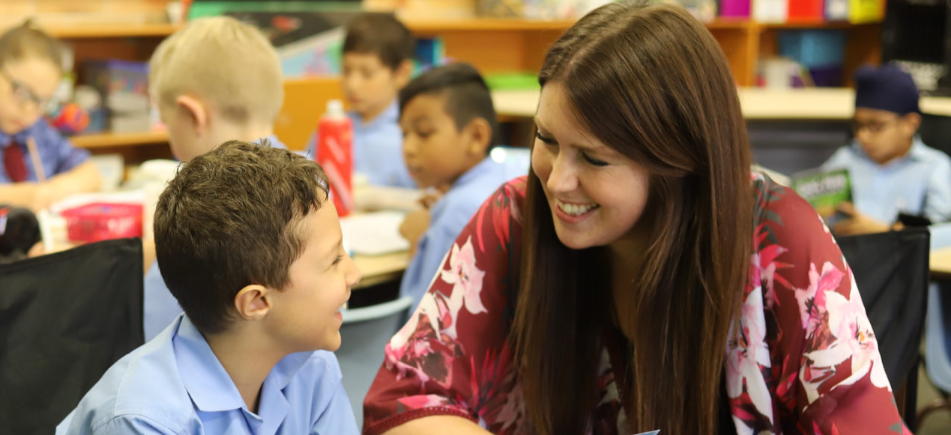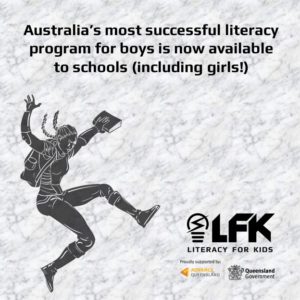Things you can do NOW to improve student literacy

Here are some strategies that you – parents, teachers, tutors & boarding masters – can employ to enhance the literacy of all students:
1. Create a Literacy-Rich Environment
Magazines: I’ve had success using these magazines with students who are reluctant readers ~Double Helix, National Geographic, How it Works, Wacky but True, Aquila.
Reading Corners: Set up inviting reading corners with a variety of books, magazines and other reading materials. Here’s an article sharing some fabulous and creative ideas about building a classroom library.
Classroom Libraries: Maintain well-stocked classroom libraries with books that cover a range of genres and reading levels.
Bulletin Boards: A colourful display of quotes, students’ written work and new book titles can grab their interest.
Biographies/Autobiographies: Consider books such as those by Bear Grylls (about survival), Shackleton’s Endurance, Krakatoa, Prisoners of Geography: Our World Explained to name just a few.
2. Promote – and model – reading behaviour
The key word here is ‘model’.
If young people see the adults around them buying into the reading culture, then their interest will naturally follow.
When I speak at schools or seminars, I use the following example:
I had a small group of boys in Year 6 who were all quite good readers but very reluctant to pick up books. I tried everything but their attention would drift, books would not be finished and they would revert back to toilet humour books (ones they had read for the fifth time!). I came across a book about Zombies – this is not my preferred genre, in fact I’m not into zombie movies or books! I gave them each a copy. They saw me reading it in class (during DEAR time), it was visible on my desk and I would take it home to read a chapter at night. I read the book alongside the students. Each day we’d informally chat about why X decided to do Y and what would you have done in this situation etc. We’d touch base each day: ask which chapter we were up to, make predictions, critique character decisions and share funny comments.
As their teacher, I genuinely enjoyed the text: the characters were brilliant, the action was fast flowing and the writing was clever. The best thing was that this book was a series, which meant the boys went on to read the next 5 books. Whether you are their class teacher, parent, tutor or boarding master, consider reading a book alongside your students/child: it communicates a strong message that you value reading!
Note: the book that I am referring to is the Rot and Ruin series by Jonathan Maberry.
3. Building Confidence
Building reading confidence in students is essential for fostering a love for reading and improving their overall literacy skills. Everyone has had experience teaching and/or tutoring kids – particularly boys – who lack confidence in their schooling. Mostly it starts with literacy. You will have witnessed that boy or girl (son or daughter) who just seems to switch off from reading. But we know that literacy overarches everything. Even in the area of Physical Education – where the talented athlete is striving for an A: he/she needs to have literacy skills in order to write an assignment in this subject.
One of my own children is a reluctant reader so I understand the struggle to get a book in their hands. But persist! Present them with a variety of books (use the library as it’s too expensive to keep purchasing books that they may dismiss), look for the latest titles and try to pinpoint their taste.
One of my best friends is a librarian – she is a wealth of knowledge, guidance and recommendations.
Reading is key – 15 minutes a night, at least. Parents, you need to enforce this.
4. Technology Integration
Online programs can offer significant value for literacy development. Both Literacy for Boys and Literacy for Kids have data-proven results and many schools are in their fifth year of using our programs. Our key difference is that we know what appeals to kids and what they want to read. A good online program should offer:
a) Engaging, kid-centric content that drives improvement: Our latest data has shown that users made a 15% improvement in their comprehension scores after only one-term. Multimedia elements such as videos, animations, interactive quizzes and games means that our programs are the fastest growing literacy in Australia and NZ.
b) Progress tracking: Teacher Dashboard tracks students’ progress, providing insights into their strengths and areas for improvement. This data can help educators tailor instruction effectively. Parents can follow their child’s percentage achievement and topic completion via the Student Dashboard – it’s easy.
c) Versatility: Our programs can be accessed from anywhere with an internet connection, making learning convenient for those students living in isolated parts of the country, everyday classrooms and at home. Teachers and parents have access to the program, which means they can track student completion of literacy tasks.
Ideas that boost literacy – you can start these TODAY!
Start a Book Club: Select authors that have wide appeal. Tristan Banks is an Australian author who is often chosen as a classroom text. Fantasy and dystopian genres are also popular.
Reading Survey: It’s a good idea to find out how your students feel about reading (are they confident? do they perceive themselves as a reader? do they dislike reading?) and where their interests lie. Here’s a printable Reading Interest survey for you to print: LFK LFB Reading Survey printable
Use resources other than books: The weekend newspaper contains sports reports/games reviews that cover netball, footy, basketball, soccer etc. Some of the articles might be enjoyed by your students in the areas of beauty, mindfulness, health, recipes.
Written timetable/Planner: Help your students to stay ahead of due dates and assignments by using a timetable. Use different colours to highlight the different subjects. Being organised will assist with exam and assignment anxiety. This is really important to help our children to manage their tasks and reduce worry.
We hope that you find these strategies useful.

Our programs ~ Literacy for Boys and Literacy for Kids ~ have had a huge uptake with schools and homeschoolers this year. It reflects two things:
a) the need for quality reading material that engages students
b) a decline in reading skills over the past three years (COVID’s impact largely)
We are incredibly passionate about improving kids’ literacy – research consistently supports the fact that confident readers achieve more highly than disengaged learners.
If we can get our children to enjoy reading they will grow into a reader, and that reader has more doors open to them in this world.
If you are wanting a resource that can boost your child’s or class’s literacy in 2023, please visit Literacy for Boys or Literacy for Kids
Check out our appearance on Channel 7 News where we were asked for our comment on NAPLAN results ~
Parents ~ sign up for a free 30-day trial and improve your child’s literacy for the upcoming school year!
As an educator, do you want more from your literacy program? Contact us for a 30-day free trial in your school or classroom. Sign up for our newsletter and get FREE Comprehension Worksheets for Years 3 to 9.
Check out our blogs for more ideas and tips.
Using Technology to include all literacy learners
Steps to Successfully Support Disengaged Learners
See us featured in The Educator Australia magazine
Research confirms that early reading boosts literacy
Boys Love LFB – Here’s what they have to say!
Get boys reading in the digital age
Why write? Tips for reluctant writers
Brought to you by Tanya Grambower

